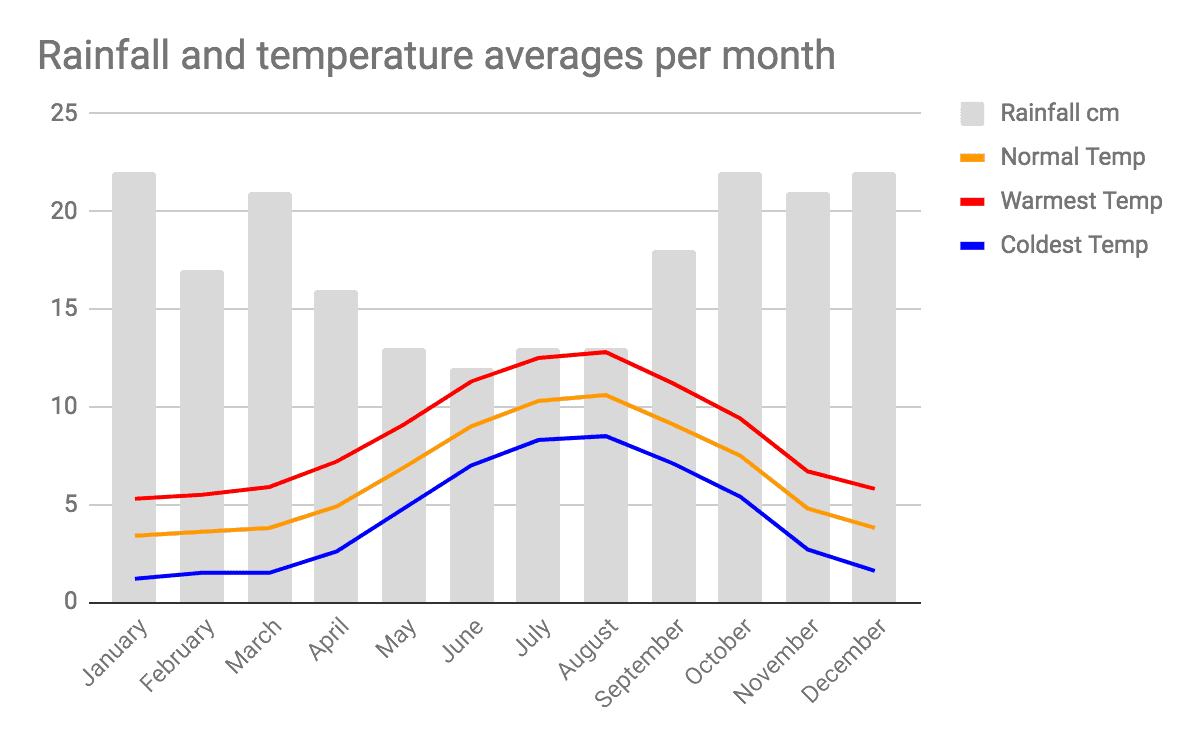
The Faroe Islands are some of the wildest islands in Europe and some of the most remote. The remoteness and isolation from the outside world, coupled with their magnificent volcanic origins, make the islands one of the most fascinating parts of Europe and perhaps the world. Needless to say, this also means there are a lot of fun facts and interesting things to know about the Faroe Islands.
Did you know that the Faroe Islands has more sheep and more puffin birds than people? Or that there is a family in an isolated island that is almost entirely self-sufficient (yes, in the 21st century!)? These are so many things I didn’t know about the Faroe Islands! I love writing this kind of post because I always learn lots of things and, well, I love Trivia!
So let me share some fascinating facts about the Faroe Islands with you. But first, check out my video of the Faroe Islands here.
1. One of the oldest parliaments in the world
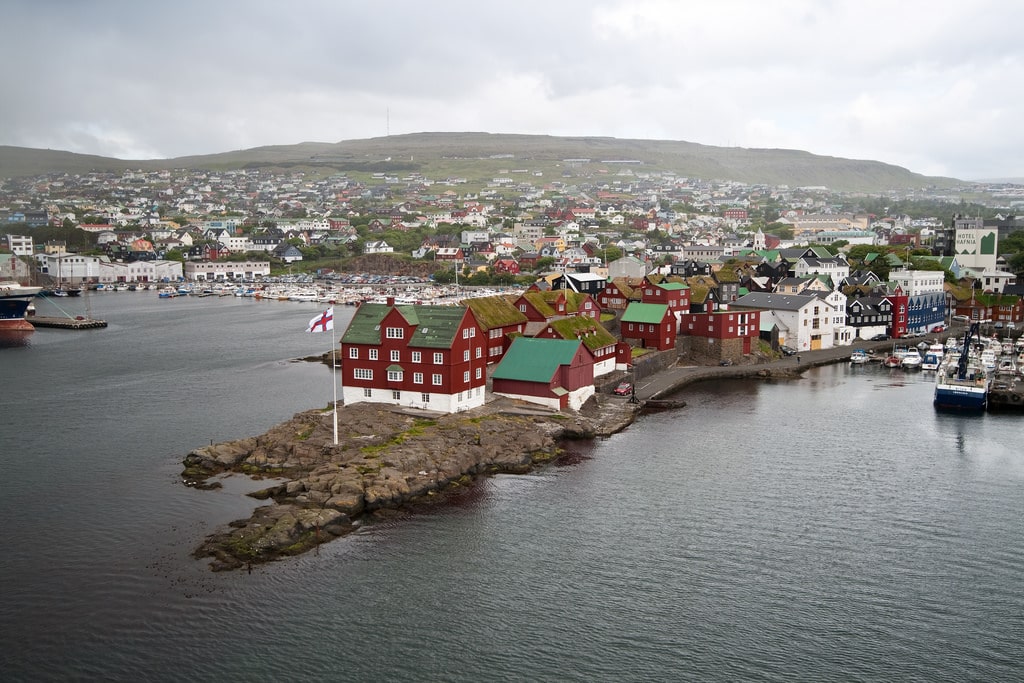
The Faroe Islands may not be an independent country, but it still has one of the oldest Parliaments in the world. Tinganes, where parliament first met in the 9th century, is probably one of the oldest parliamentary meeting places in the world that is still in use. It is also a picturesque part of the capital city, Torshavn.
2. Salmon, salmon, salmon
The remoteness and harsh weather conditions of the Faroe Islands means that local food is relatively limited and most of the items are imported from Denmark. However, there are two products that are as Faroese as it gets: salmon and lamb.
Sheep are clearly a national staple, in fact, the islands’ name comes from the Viking word for sheep, but salmon is equally as important, and delicious. The local company Bakkafrost is the eighth largest salmon farming company in the world.
We had salmon at every meal and it was the best I have ever tried. So fresh, so flavourful and so amazing.
3. Never too far from the ocean
The Faroe Islands archipelago is made of 18 islands. Because of their elongated shape, you can never be farther than 5km from the ocean.
As you drive the roads and explore the islands you will never lose sight of the untamed Atlantic Ocean, with its wild waves and its incredible wrath.
4. The quaintest most unusual roofs
The houses in the Faroe Islands have the most distinct and easily recognizable architecture: turf/grass roofs.
These give the country a homogeneous feeling from above as the rolling grass fields blend in with the houses’ roofs. The combination of dark wood, green grass roofs (in the summer) and blue and red window frames is a very unique if picturesque Faroese postcard.
But did you know that the roofs of the houses are not mowed with machines but that sheep are placed there to graze and cut the grass? Definitely a sight to behold.
5. Sheep (and puffin) outnumber humans
When you spend some time on the Islands you quickly realise there are more sheep than humans. In fact, there are less than 50,000 Faroese on the Islands and 70,000 sheep.
Faroese sheep have thick hair that looks plump and long over their otherwise skinny body. They are curious and not afraid of cars so you need to be careful when driving. Some of the sheep wear reflective vests to make them more easily seen in foggy and dark weather, the most common weather in the Faroe Islands.
They are commonly found grazing near roads and are known to return home to their barn in the evenings as the sun sets. Sheep dogs help with the task.
If you mistakenly kill a sheep when driving, make sure to tell the shepherd so he does not spend hours looking for it.
6. Safety without a prison
The Faroe Islands are one of the safest places of Earth. So much so, that there is no prison on the Islands, any prisoners that need to be held for longer than 1.5 years need to be sent to Denmark.
7. No traffic lights
I was impressed with the amazing infrastructure and roads on the islands, especially the 5min long undersea tunnel connecting Vagar with Streymoy islands.
And considering the low population, you are unlikely to find any traffic jams. This is probably the reason why there are only three traffic lights, all of which are in Torshavn, on the same street.
If you think three traffic lights is few, check out Bhutan where there is only one!
8. Free buses, and near-free helicopters!
The buses in Torshavn are free for everyone. The generosity of the government does not end there. Helicopters serving the remote islands are heavily subsidized for everyone, including for tourists, so you can hitch some of the most amazing rides on public transportation!
It is advisable to book one way on the helicopter and one way on the ferry wherever available as the helicopters are the lifeline for many of the islanders so they should not be abused.
9. Not warm, but also not freezing
Considering its Northerly location, the Faroe Islands are remarkably temperate in the winter months. In fact, they are the warmest of the Nordic countries with winter temperatures hovering above freezing for most of the day (compared to well below zero for the rest of the countries).
However, that also comes with cold summers. Whereas other parts of the Nordic countries can reach positive temperatures above the 20 Celsius level, the thermometers in the Faroe Islands are unlikely to ever reach that level.
The islands have some of the most stable temperatures in the world with yearly averages oscillating between 3 and 11 Celsius.
10. Gambling fans
I am not sure if this was an exclusive Faroese thing or a Danish one but we were quite surprised to see so many gambling ads on TV. Every 3-4 ads shown at breaks were for online gambling companies.
These types of ads are banned in most countries, together with advertising alcohol or cigarettes, but seemed to occupy primetime TV in the Faroe Islands.
11. Part of Denmark but not part of the EU
Since 1948 the Faroe Islands have a self-governance status within the Kingdom of Denmark. Faroese is the official language and their flag is also recognized by Denmark. However, when Denmark joined the European Union, the islands refused to join due to the fishing limits, on which the islands depend, resulting in the very unique situation where a part of a country is in the EU whereas the other part is not.
This causes confusion and issues at immigration and border points when would-be travelers think they can visit the islands with the same visa they have for Denmark despite this not being the case. A separate visa is required for the Faroe Islands to those who need one for Denmark. Read more about the visa particulars in my Guide to the Faroe Islands.
12. Dairy Milk chocolate and 170 marriages
British troops occupied the Faroe Islands in 1940 under what was known as Operation Valentine, when Nazi Germany invaded Denmark.
The occupation was a preemptive friendly measure to ensure the German troops would not have a base in the North Atlantic Ocean and lasted for just five years.
In 1945 the British left, leaving behind the popular Dairy Milk chocolate which is rarely stocked on mainland Denmark, the runway in Vagar, as well as 170 soldiers – who had local Faroese marriages. The English influence can still be felt today despite the short but intense mixing and it is said that the Faroese love fish and chips.
13. Tree-less
The Faroe Islands are devoid of trees. The ones that originally existed were probably cut by the first settlers and were never replanted.
You may see a couple here and there but they have been imported. This gives a very unique feeling to the islands, with neverending rolling hills interseeded with sharp, choppy outcrops and fairy-tale villas.
14. Little grows on the island
In 2017, a very unique Faroese restaurant called Koks was awarded one Michelin star. That would not be unusual, for there are hundreds of starred restaurants in the world, but Koks is known for serving dishes made with produce that has entirely been foraged or grown on the Faroe Islands.
Again, that would not be strange, lots of restaurants are big proponents of Proximity Food, but the Faroe Islands’ rough terrain and wild weather is harsh on crops and not much grows locally. Potatoes, rhubarb, some vegetables, lamb and the fruits of the sea are the only available ingredients which naturally grow on or around the islands.
This reminds of me Singapore, where nothing is grown locally, for other reasons related to space instead of infertile soils and tough climate.
15. Elves and witches
The volcanic landscapes and the breathtaking rock formations with cliffs sliding up above the sea and then crashing down on steep walls, give the islands a mythical look, one which has been the source of many legends.
Mystical tales of witches, creatures of the night, elves and giants explain most of the unusual shapes and formations. Ask any local about it, and you shall know.
16. You can see the Northern Lights!

In recent years, the Northern Lights, or Aurora Borealis, have become something of an obsession for travelers and photographers alike. And with reason. Watching them from the comfort, warmth and romance of a transparent bubble is simply amazing.
As they are mostly seen in the areas closest to the North and the South Poles, Iceland and the rest of the Nordic countries are prime targets. However, did you know that you can also see them in the Faroe Islands?
Granted the weather tends to be inhospitable and the clouds generally float low in the sky, but the Faroe Islands are within the range of the Light’s magnetic field and they are often seen. Needless to say, the remoteness of the islands make it easier for them to be spotted.
17. 21st century “hermits”
There is a village called Stora Dimum where two families live practically self-sufficiently and isolated from the world in the 21st century. They are disconnected from the rest of the islands, yet are safe enough for a sporadic helicopter service. They survive from sheep farming, bird catching and tourism, and curious visitors come to see what it is like to be modern hermits in the 21st century.
18. Google SheepView
The Faroese are proud and nationalistic, so, when they realised it was going to take Google a while to map their islands on Street View, they equipped a bunch of sheep with their own street view cameras and set them free.
The results were amazing in what is one of the best tourism promotion campaigns and most fun community initiatives.
You can read all about the adventure and its creator in the Sheepview blog.
19. Other things you didn’t know about the Faroe Islands
Other fun facts about the Faroe Islands include the fact that the Prime Minister’s phone is in the phone book and can regularly be seen in the streets, waving to his people.
Or that there are 80 nationalities and 110 different languages spoken on the tiny islands, inhabited by less than 50,000 people. And it seems that none of them wanted a MacDonald’s because there isn’t one outlet on the Faroe Islands, although there is a Burger King.
Looking to visit the Faroe Islands? Check out our complete guide the Faroe Islands. And if you need a place to stay, these are our recommended hotels.
Foroyar Hotel

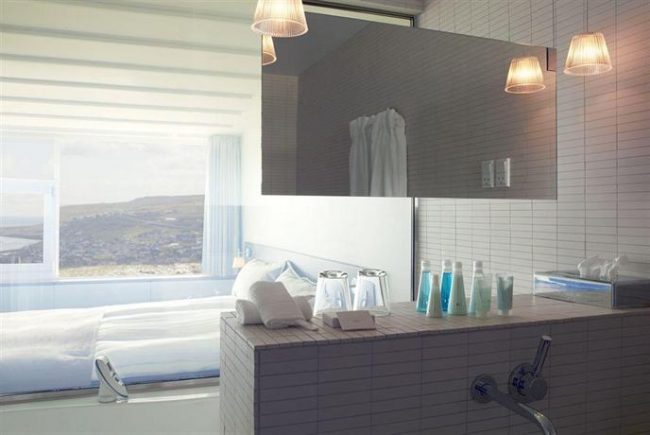
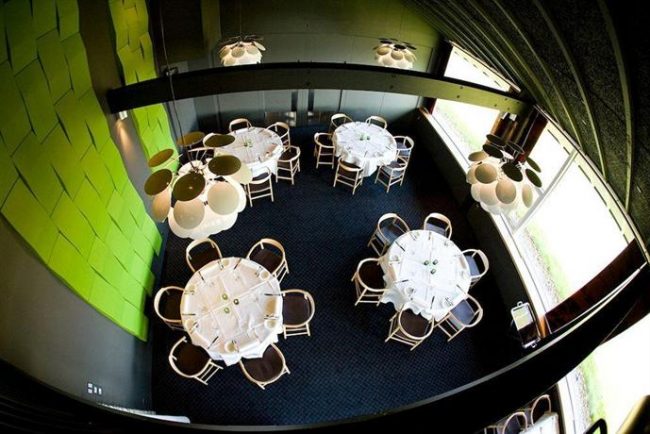
Located in the outskirts of the city, high atop a hill, Foroyar Hotel is the highest rated hotel in the Faroe Islands. Although they bill themselves as the country’s only four star hotel, I think it is more a 3,5 star mostly because the rooms are nothing special.
The hotel has full facilities, including a gym, and the restaurant with the best views in Torshavn. There is also a bar and meeting rooms. The reception is 24h and can help out with anything. There is a small fridge which sells snacks and sandwiches, as well a small selection of sushi from Etika.
When the rest of the country is closed off, aka during the Christmas holidays, Foroyar Hotel is the only place open so most foreigners congregate there.
All the rooms at Foroyar Hotel have the same views as the restaurant, and a stunning perspective over the bay and the city. The hotel’s turf rooftop is a welcome touch.
For more images, rates and availability check out Agoda
Hotel Hafnia



A good hotel in the downtown area of Torshavn, within minutes to all the restaurants mentioned in the food section above, with warm hues, light wood and colorful decor. After Hotel Foroyar, this is the next best hotel in the Faroe Islands.
Hafnia is closed during the Christmas period.
For more images, rates and availability check out Agoda
Hotel Torshavn
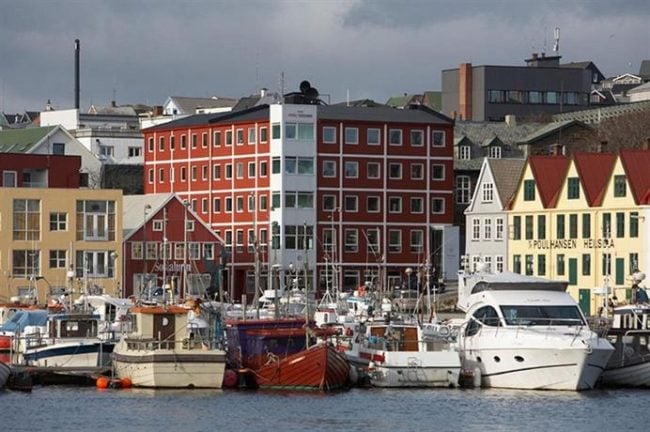

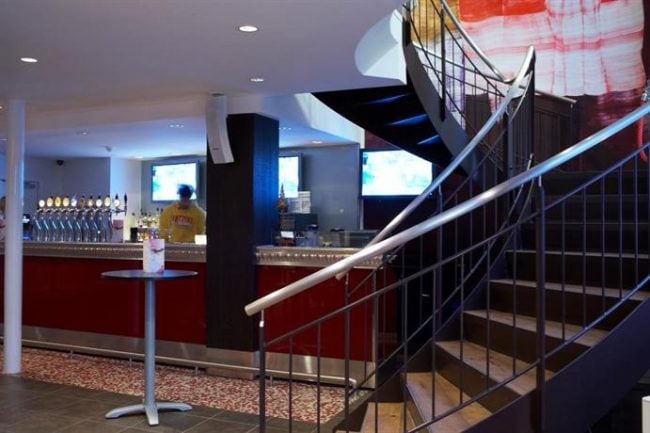
Another local favourite in town by the harbour this is a scenically located hotel with nice views over the fishing boats.
Its location by the ferry area is convenient for daily excursions during the summer months.
The hotel was renovated in 2007 from its 1923 former seamen hostel glory, and is now a modern 3 star hotel in burgundy, red and orange tones. The hotel is open all days of the year, there is a bar and brasserie available.
For more images, rates and availability check out Agoda
Pin this to your #factsoftheworld Pinterest board
- Check if you need a visa, get help processing it at iVisa.
- Never ever leave without travel insurance. Get affordable coverage from World Nomads or long term insurance from Safety Wing.
- I find all of my flights on KAYAK. Check their Deals section too.
- Search for all your transportation between destinations on the trusted travel booking platform Bookaway.
- I book all my day trips and tours via GetYourGuide, they are the best and their tours are refundable up to 24h in advance.
- Get USD35 off your first booking with Airbnb.
- Compare hotels EVERYWHERE at HotelsCombined and book with Booking.com.
- Compare car rental prices at Rentalcars.com




